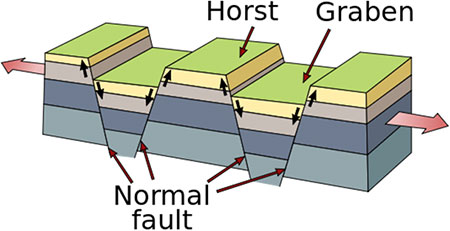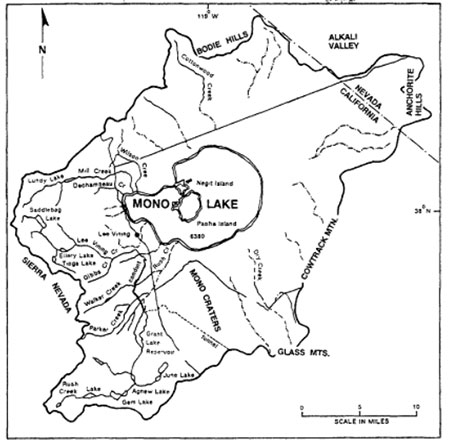Geology and Natural Heritage of the Long Valley Caldera
Geology and Ecology of Mono Lake
Kevin Kuo
I. Abstract
Mono Lake is a highly saline and alkaline terminal basin located in Mono County, California. Through a number of different geological, hydrological, and ecological processes, a unique ecosystem has formed in the lake. Although it lacks biodiversity, the organisms that do live in the area (including algae, brine shrimp, alkali flies, and birds) thrive in the environment. Each of these organisms interact with each other, and each of these organisms is shaped by and dependent on the geology of the area. The ecosystem’s reliance on the land also makes it very fragile as it is easily damaged by changes in the environment. The unique ecosystem of Mono Lake was originally shaped by the geological processes in the region, and these have had ramified effects on the lake hydrology and subsequently the flora and fauna.
II. Introduction
When Mark Twain visited Mono Lake in the 1860s, he described it as a lifeless desert, the "Dead Sea of the West." The arid climate, the acrid water, and the austere landscape does not appear to be welcoming to life, and perhaps these were the thoughts of the Los Angeles Department of Water and Power when they diverted water from the lake’s tributaries in the mid–20th century. If the water flowing to Mono Lake did nothing but pool up and evaporate, what harm could diverting a few streams do to the environment? If Mono Lake were truly devoid of life, perhaps this action would not have any negative effects. However, Mono Lake, in its odd environment, supports a vast, populous ecosystem with trillions of animals. Its peculiar ecosystem is a unique one, and it contains species found nowhere else in the world. Through a number of geological and ecological processes, Mono Lake has been shaped into a haven for a large portion of North America’s birds and an even larger population of smaller organisms. Every single organism in this delicate ecosystem depends strongly on the lake and its geological features, and without the lake, the ecosystem could not exist.
III. Geological Background
a. Setting
Located in Mono County, California, Mono Lake exists because of the Mono Basin, a terminal basin to the East of Yosemite National Park. To the south of Mono Basin is the north ridge of Long Valley; to the east is the Cowtrack Mountain; to the North are the Bodie Hills; and to the west is the Sierra Nevada. Each of these borders slope downwards and to the center of the basin, giving no drainage pathways. The Mono Basin area is best described from a hydrographic perspective which defines it as all of the streams that drain into the region (Schweich, 2013). In the 1993 Environmental Impact Report of Mono Lake, the basin was estimated to have an area of 1800 square kilometers (Jones & Stokes Associates, 1993).
b. Macro–scale Formation
The down–warped area of the Mono Basin has been forming for the past 5 million years by Basin and Range crustal stretching. According to the USGS, the crust in the Basin and Range Province has stretched to nearly 100% of its original width, causing a thinning of the crust as well. As the crust is pulled apart, faults form in a North–South pattern forming parallel regions of mountains and valleys (USGS, 2004). Figure 1 below illustrates the general faulting pattern that creates upthrown blocks known as the horst and downdropped blocks known as the graben (Earthquake Glossary- horst, 2012). The results of this crustal stretching are low graben areas such as Mono Basin surrounded by horst areas of much higher elevation. Elevations in the Mono Basin area range from around 1945 meters above sea level at the lake surface to nearly 4000 meters above sea level at the crest of the Sierra Nevada (Mono Basin Ecosystem Study Committee, 1987, p. 13) Because lake sediments have been found beneath ash deposits from the Long Valley eruption 760,000 years ago, Mono Lake is estimated to be at least 760,000 years old making it one of the most ancient lakes in North America (Volcanic History: Evidence of Recent Eruptions, 2013).
Figure 1: Horst and Graben faulting pattern. Source: USGS.
IV. Hydrology of Mono Basin
Because all of the structures surrounding Mono Lake are of a higher elevation than the lake itself, water flowing into the basin cannot flow out. During the ice age that had begun about one million years ago, this was not the case (Ray, 2012). At that time, Mono Basin was filled completely with water over 274 meters deep, and the water from the basin continued to flow southward (Hill, 2006, p. 323). However, as the climate changed over time, the level of the lake diminished to depths closer to those seen presently. When the level of the lake lowered and the water no longer flowed out, the chemistry of the lake changed dramatically. Because water primarily leaves the basin via evaporation, all of the sediments and dissolved ions carried by its source streams continuously collect in the lake. The geological features of the region powerfully shapes the chemistry of Mono Lake.
a. Endorheic Basins
Terminal basins, also known as endorheic basins, differ from exorheic basins in that they do not drain to the ocean. As a terminal lake, Mono Lake is not a unique occurrence; thousands of terminal lakes exist around the world on every continent including Antarctica (Mono Basin Ecosystem Study Committee, 1987, pp. 16–17). Other major endorheic basins include the Caspian Sea, the Dead Sea, and Owens Lake which also exist in desert regions (United Nations Environment Programme, n.d.). The water in systems like these typically flows inland via streams and exists primarily via evaporation from the surface and seepage into the ground. Because water does not continue flowing out, the composition and volume of the lake depends almost entirely on the composition and volume of incoming water. Any of the incoming sediments or minerals from the rivers feeding an endorheic basin accumulate in the lake, so lakes of this type are very vulnerable to pollution. Water in endorheic basins typically evaporates at rates of up to 2 meters per year, so diversions of incoming water can have extreme impacts on lake levels (Mono Basin Ecosystem Study Committee, 1987, p. 38). While devastation was avoided in Mono Lake during the 20th century, many endorheic basins have not had as much luck. For instance, the inflows of the Aral Sea located on the border of Kazakhstan and Uzbekistan were essentially all diverted for irrigation purposes in the middle of the 20th century, and the result was a dramatic change in the chemistry of the lake. When its major inflow rivers, Amu Darya and Syr Darya, were diverted, the water level of the Aral Sea plummeted and the water became very saline and polluted with pesticides. This devastated the ecosystem of the Aral Sea and destroyed the fishing economy of the area (United Nations Environment Programme, n.d.).
Figure 2: Hydrological drainage map of Mono Basin. Source: "The Mono Basin Ecosystem: Effects of Changing Lake Level."
When the Los Angeles Department of Water and Power (LADWP) began to divert water from Mono Lake’s inflow streams in 1941, the salinity of the water doubled and the volume halved in only two decades (The Mono Lake Story, 2013). Four of the five rivers shown in Figure 2 above were diverted, including the Owen’s River. In eleven years, Owens Lake became completely dried up (Hill, 2006, p. 333). Endorheic basins are all extremely dependent upon their tributary streams, and their composition and overall existence can be altered completely when the streams are modified.
b. Water Chemistry of Mono Lake
The composition and chemistry of an endorheic basin like Mono Lake is directly affected by the contents of its tributaries. While the streams flowing into Mono Lake are considered to be freshwater, like all other streams they also contain numerous dissolved salts picked up as the stream flows. When the water that has entered the lake evaporates, the dissolved chemicals remain (Hill, 2006, p. 324). Because of this process of evaporation and concentration, Mono Lake is 2–3 times more saline than ocean water, the lake having a salinity of 80.8 grams of dissolved solids per liter of water. In fact, Mono Lake is estimated to contain 280 million tons of dissolved solids (Chemistry: Strange Water, Strange Towers, 2013). The majority of these dissolved solids are sodium chloride, but the water also contains significant amounts of sodium bicarbonates, sodium sulfates, borate, and potassium (Mono Basin Ecosystem Study Committee, 1987, p. 57). Because of the high concentrations of carbonates, the waters of Mono Lake are also highly alkaline, having a pH of 9.8. Additionally, the high concentrations of bicarbonates is partially responsible for the tufa towers that were exposed as the water level lowered. As calcium ions from hot springs react with the carbonates in the water, insoluble calcium carbonate, also known as the mineral thinolite, builds up into towers ( (Hill, 2006, p. 325). Many of these structures now serve as habitats for the migratory birds passing through Mono Basin. Different geological factors have shaped the unique chemistry of Mono Lake, and its unique chemistry has shaped the ecology of the region.
V. Aquatic Life
Because the highly saline and alkaline water of Mono Lake is an extreme environment in which most organisms cannot survive, the aquatic life of Mono Lake lacks diversity when compared to more neutral bodies of water. For instance, the combination of high salinity and alkalinity does not allow for any fish to survive in the water. However, because of this lack of diversity, the organisms that can survive in the water are extremely prolific. Without competition, organisms such as algae and brine shrimp are free to exploit all resources of the lake and can reproduce freely without overcrowding (Mono Basin Ecosystem Study Committee, 1987, p. 69). Although the water of Mono Lake is not habitable by most organisms and lacks biodiversity, it is an extremely productive aquatic ecosystem.
a. Algae
Besides cyanobacteria, the algae in Mono Lake are the only primary producers in the ecosystem. In Mono Lake, like in other hypersaline environments, only a few species of algae are observed. Two groups of algae in Mono Lake are phytoplankton which are primarily single celled organisms suspended in the water and benthic algae which include larger organisms residing on the lake floor (Icelandic Ministry of Fisheries and Agriculture, n.d.). The dominating phytoplankton species are coccoid green alga, Nannochloris, cyanobacteria, and diatoms. Nitzschia frustulum, other diatoms, filamentous cyanobacteria, and the green alga Ctenocladus circinnatus are the primary benthic algae species (Mono Basin Ecosystem Study Committee, 1987, p. 72). The population density of algae is directly related to the limnology of the water which has annual cycles of mixing (Profile of Monomixis and Meromixis, 2010). In the summer, algae primarily grows near the top of the lake, depleting its local nutrients. This causes the algae population to decrease, as shown in Figure 3 above. However, a seasonal mixing of the lake helps to rejuvenate the population. Mono Lake typically follows a monomixis pattern, only mixing once per year. This occurs November through February (Mono Basin Ecosystem Study Committee, 1987, p. 72). During this time, important chemicals and nutrients such as oxygenated water and nitrogen from animal waste are redistributed. This occurs because the strata of differently heated water which are met with a border known as a thermocline change temperatures (and therefore densities) with the seasonal climate. After mixing, algae receives greater amounts of nutrition leading to the winter algal bloom (Profile of Monomixis and Meromixis, 2010). Much of the nutrition required for algal growth is dependent on the aquatic animals in Mono Lake, and the aquatic animals are also dependent on the algae. The seasonal changes in algae population are closely connected to the aquatic animal population as well.
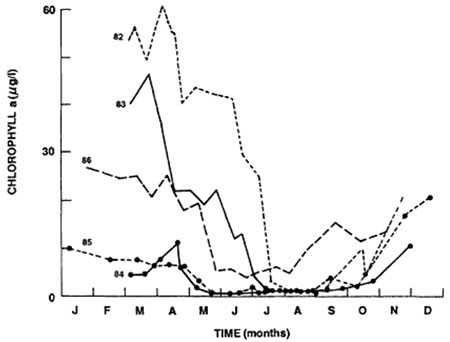
Figure 3: Mean amount of chlorophyll in Mono Lake for years 1982, 1983, 1984, 1985, and 1986. Source: "The Mono Basin Ecosystem: Effects of Changing Lake Level."
b. Brine Shrimp
Because of the high salinity and alkalinity of Mono Lake, few animals can survive in the water. No fish are able to withstand the conditions of the lake. However, one species of brine shrimp, Artemia monica, is extremely prolific in the saline, alkaline water of Mono Lake. During the warmer months of the year, it is estimated that up to six trillion brine shrimp feeding on algae inhabit the lake (Brine Shrimp: Mono Lake’s Unique Species, 2013). Its ability to grow to such gigantic populations is in part due to the fact that the species effectively has no competition. Although the genus Artemia has a worldwide distribution, A. monica is found only in Mono Lake. One hypothesis is that the shrimp originated during the period in the Great Ice Age when the lake continued flowing southwards. The different species within the genus Artemia share similarities, but A. monica is different in many respects. For instance, Mono Lake is a perennial lake unlike the habitats of other brine shrimp which are often shallow and temporary lakes. Also, other Artemia species are unable thrive in the alkaline water of Mono Lake like A. monica (Jones & Stokes Associates, 1993, p. J-1).
In the highly saline water of Mono Lake, most aquatic organisms become desiccated due to osmotic pressure. Even when organisms do survive in the water, it is often too metabolically costly to regulate the osmolarity, and organsisms do not thrive. A. monica is able to regulate its internal osmolarity through active transport of ions and water through the gut in addittion to excretion of ions across the gills (Jones & Stokes Associates, 1993, pp. J–3). Although the Mono Lake brine shrimp are adapted to high salinities, the growth and reproduction of the brine shrimp is hindered at salinites above 100 g/L total dissolved solids (Jones & Stokes Associates, 1993, p. J–4). Thus, changes in the salinity of Mono Lake caused by changing lake levels could have a great impact on even the resilient A. monica population. This would have ramifications throughout the rest of the ecosystem as well: Mono Lake ecosystem is a fragile one.
VI. Terrestrial Life
The aquatic life of Mono Lake is limited in variety, but it exists in great numbers. Containing species that are found nowhere else on Earth, the aquatic ecosystem of Mono Lake is truly unique. However, the life under the surface of the lake only represents a section of the Mono Lake ecosystem. Above the surface, the life in the ecosystem spans continents. Although the terrestrial life of Mono Lake contrasts sharply against the aquatic life, both parts are interconnected. The variety of birds and flies above the surface depend almost entirely on the organisms and structures below.
a. Alkali Flies
Perhaps the most noticeable terrestrial organism at Mono Lake are the alkali flies that swarm and form thick carpets around the water. The predominant species of alkali flies, also known as brine flies, is Ephydra hians. (Mono Basin Ecosystem Study Committee, 1987, p. 77). E. hians depends heavily on the lake for reproduction. Female brine flies must lay their fertilized eggs in shallow water on a hard substrate because the embryos must stay completely hydrated to survive. The adult flies can accomplish this underwater delivery because small hairs surrounding their bodies trap a layer of air around the flies when underwater (Mono’s Alkali Fly, 2013). Embryos must stay hydrated because when adhered to an underwater surface, the moving water removes waste and supplies oxygen to the egg. After the larva emerges from the egg, it must be near a food source. All of these requirements are fulfilled by structures like tufa towers which provide easily accessible underwater surfaces on which a food source such as algae can grow (Mono Basin Ecosystem Study Committee, 1987, p. 90). Because of the structures and organisms in the lake, alkali flies are able to thrive in the area.
The alkali fly has been an important food source for a variety of different organisms, including humans. The Kutzadika’a people, a Native Americano of the Northern Paiutes, reside in the Mono Basin area. Their name comes from the Paiute term for "fly eater" because the pupae of the alkali fly was staple food of the tribe (Hill, 2006, p. 330). Currently, however, the most prominent consumers of the alkali fly are the hundreds of thousands of birds that pass through Mono Lake throughout the year (Mono's Alkali Fly, 2013).
b. Birds
Mono Lake attracts enormous volumes of birds because of it offers such large volumes of food in the form of brine shrimp and alkali flies. The brine shrimp and alkali flies are able to reach such high populations because the prohibitive environment eliminates aquatic predators and competition. In Mono Lake, three species of birds–the eared grebe, the phalarope, and the California Gull–are the only major predators in the area, but they arrive in considerable numbers (Mono Basin Ecosystem Study Committee, 1987, p. 93). Nearly 750,000 eared grebes (Podiceps nigricollis) arrive each October; nearly 80,000 Wilson’s phalaropes (Phalaropus tricolor) arrive each July; and nearly 65,000 red–necked phalaropes (Phalaropus lobatus) arrive each August. Additionally, a large population of California gulls (Larus californicus) nest on the islands of Mono Lake from April through July (Hill, 2006, pp. 330–331). A substantial portion of the North American populations of each of these species depends heavily on Mono Lake as a source of food and shelter.
Eared grebes (Podiceps nigricollis), pictured below, primarily use the Mono Lake during fall migration as a site to rest and collect food (Mono Basin Ecosystem Study Committee, 1987, p. 93). The brine shrimp and alkali fly constitutes over 95% of the diet of the eared grebes during the fall. Starting at an average weight of 250 grams, eared grebes consume up to 70,000 shrimp per day gaining weight at a rate of about 3 grams per day from August through October (Mono Basin Ecosystem Study Committee, 1987, p. 96). Each year by the time the grebes have sufficiently built up their fat reserves and departed south, the brine shrimp population drops for the rest of the year. If the population of brine shrimp and alkali flies at Mono Lake were to decrease, much higher mortality rates of eared grebes would be expected until the grebes distributed to other food sources (Mono Basin Ecosystem Study Committee, 1987, pp. 98-99).
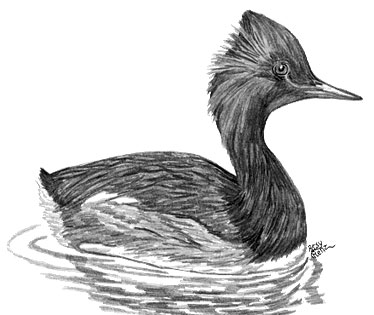
Figure 4: Eared Grebe (Podiceps nigricollis). Source: USGS Northern Prairie Wildlife Research Center
The population of the phalarope, pictured below in Figure 5, at Mono Lake also uses the area as a staging area before continuing migration south. They begin arriving in July when the alkali fly population nears its peak and continue arriving until August. While at Mono Lake, the birds complete their molt and build up fat by eating about 93% alkali flies and 7% brine shrimp. Alkali flies are more popular than brine shrimp with the phalaropes because they have a larger size and higher nutritional content. The phalaropes use exposed tufa towers and sandbars for roosting in part because alkali flies are abundant in those areas (Mono Basin Ecosystem Study Committee, 1987, pp. 101–103). After they have molted and built up their fat in September, they depart from Mono Lake on a non–stop journey to South America (Birds of the Basin: The Migratory Millions of Mono, 2013). The phalaropes are highly dependent on both the geology and ecology of Mono Lake.
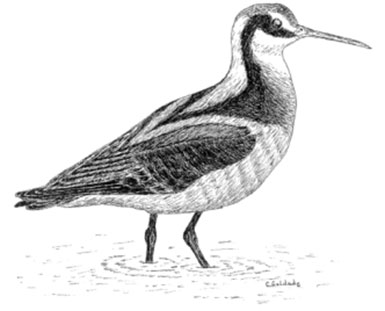
Figure 5: Wilson’s Phalarope (Phalaropus tricolor). Source: USGS Northern Prairie Wildlife Research Center.
The third main avian species of Mono Lake, the California gull (Larus californicus) depends heaviest on the volcanic islands of Mono Lake. The majority of California Gulls are born at Mono Lake where the birds find sanctuary away from predators on its multiple islands. Negit Island, a black cinder cone island in Mono Lake, is home to the most gulls (Birds of the Basin: The Migratory Millions of Mono, 2013). It has been estimated that up to 21% of the world population of L. californicus is situated at Mono Lake (Mono Basin Ecosystem Study Committee, 1987, p. 105). The birds begin arriving in April, and hatching peaks in June when the brine shrimp and alkali flies are most abundant. The gulls are populous at Mono Lake because it provides them with a predator–free area, plentiful food, and fresh water which can be accessed near the lake (Mono Basin Ecosystem Study Committee, 1987, pp. 106–107). As the water level of Mono Lake fell when its tributaries were diverted by the LADWP, a land bridge connecting Negit Island to the shore was exposed. This allowed predators such as coyotes to attack the vulnerable gulls, and the island was abandoned until more recently when the water level rose sufficiently (Birds of the Basin: The Migratory Millions of Mono, 2013). If the water level had continued to decrease, the population of California Gulls at Mono Lake would be significantly compromised. The geology, hydrology, and ecology of Mono Lake support the bird population greatly, but a change in any of the factors can damage the entire system.
VII. Conclusion
With its unique combination of geology and ecology, Mono Lake supports enormous populations of life. When Los Angeles diverted the tributaries of the lake, the thriving ecosystem could have been completely eliminated. Perhaps those who voted to divert the water were oblivious to the potential ramifications, or perhaps they were simply apathetic. Luckily, the issue was mitigated before the ecosystem was permanently damaged. The story of Mono Lake should be taken as an admonitory tale. Before altering nature, it is important to observe it carefully first because an obscured but inimitable system may exist beneath.
Works Cited
Birds of the Basin: The Migratory Millions of Mono. (2013). Retrieved from Mono Lake Committee: website
Brine Shrimp: Mono Lake’s Unique Species. (2013). Retrieved from Mono Lake Committee: website
Chemistry: Strange Water, Strange Towers. (2013). Retrieved from Mono Lake Committee: website
Earthquake Glossary– horst. (2012, July 24). Retrieved from USGS: website
Hill, M. (2006). Geology of the Sierra Nevada. Los Angeles, CA: University of California Press.
Icelandic Ministry of Fisheries and Agriculture. (n.d.). Benthic Algae. Retrieved from Icelandic Fisheries: website
Jones & Stokes Associates. (1993). Mono Basin EIR.
Mono Basin Ecosystem Study Committee. (1987). The Mono Basin Ecosystem: Effects of Changing Lake Level. Washington, D.C.: National Academy Press.
Mono’s Alkali Fly. (2013). Retrieved from Mono Lake Committee: website
Profile of Monomixis and Meromixis. (2010). Retrieved from Mono Basin Clearinghouse: website
Ray, L. L. (2012). The Great Ice Age. USGS General Interest Publications.
Schweich, T. (2013, June 06). Mono Basin, Mono County, California. Retrieved from Eastern Mojave Vegetation: website
The Mono Lake Story. (2013). Retrieved from Mono Lake Committee: website
United Nations Environment Programme. (n.d.). Endorheic Lakes: Waterbodies That Don't Flow to the Sea. Retrieved from UNEP Division of Technology, Industry and Economics: website
USGS. (2004, January 01). Geological Provinces of the United States: Basin and Range Province. Retrieved from USGS: website
Volcanic History: Evidence of Recent Eruptions. (2013). Retrieved from Mono Lake Committeee: website
[Return to Research Projects] [Return to Sierra Home]
